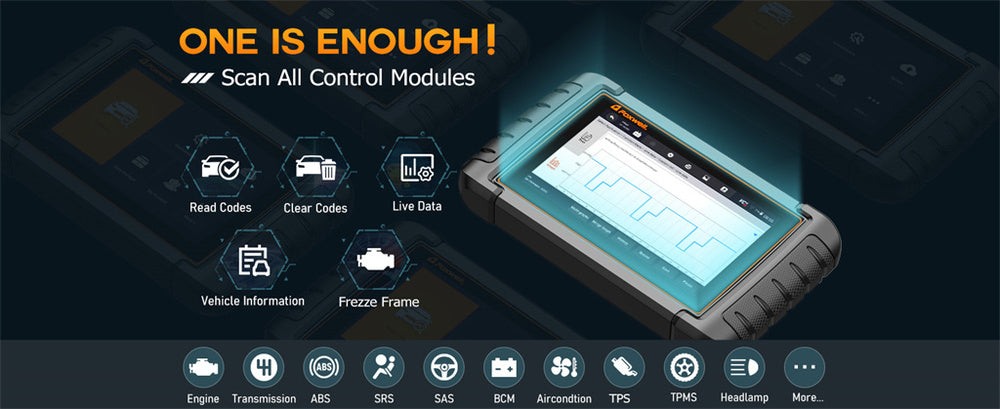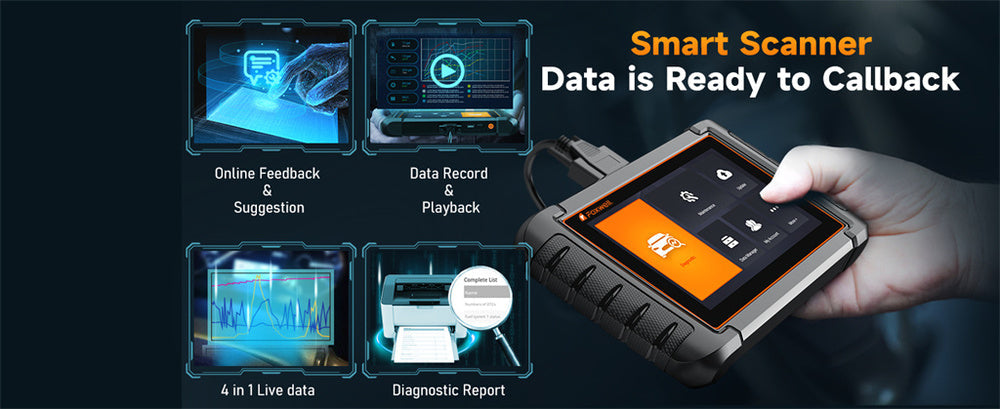When your car has difficulty starting without any check engine light or error codes appearing, diagnosing its cause can be tricky. One potential cause could be an issue with your evaporative emissions (Evap) system—possibly with its purge valve being stuck closed.
We will demonstrate here how to use live data from an OBD2 scanner to quickly and efficiently diagnose a stuck purge valve as well as other potential Evap system issues.
How Does the Evap System Work and What Does the Purge Valve Do?

An Evap system helps keep fuel vapors from escaping into the atmosphere by storing them in a charcoal canister until released back into your engine, where they're burned up during combustion, helping keep emissions and fuel efficiency under control.
The purge valve plays a central role in this system, controlling when and how vapors from the canister enter the engine.
Your car's computer should open and close it at specified times--for example, during light throttle or cruising speeds--however, if it becomes stuck open during idle or startup, fuel vapors could enter unexpectedly--leading to rough idling, poor economy, or difficulty starting your car.
What Is Live Data from an OBD2 Scanner, and How Can it Help Diagnose Issues?
Real-time OBD2 scanner information provides real-time information from sensors within your vehicle. This data is invaluable when diagnosing issues that don't produce error codes - such as a stuck purge valve in an Evap system - without error codes being generated by error messages alone.
Live data also indicates how components function while running, giving insight into any irregularities you notice immediately.
Key Live Data Parameters to Consider for Evap System Issues
When monitoring live data to detect issues in an Evap system, pay particular attention to these parameters:
- Purge Valve Command: This indicator indicates whether the car's computer has instructed the valve to open or close.
- Fuel Trim (Short and Long-term): Fuel trim readings indicate how effectively your car's fuel system adjusts to maintain an ideal air-fuel ratio. A stuck purge valve may lead to an overly rich mixture with negative fuel trim values.
- Evap System Pressure: This indicates the pressure in your Evap system. If one or more valves remain stuck open, system pressure may remain low and vice versa.
How to Identify a Stuck Purge Valve Using Live Data
The Foxwell NT809BT OBD2 scanner makes diagnosing your vehicle easy; all it takes to properly monitor live data for diagnostic purposes and track live transmission of purge valve information. Here's how you can use it to check if your purge valve is stuck:
Connect the Foxwell NT809BT: To use it, plug the scanner into your vehicle's OBD2 port and turn it on. Then, select the "Live Data" section to start monitoring real-time sensor readings.
Monitor Purge Valve Command: Within your live data, locate the Purge Valve Command to see whether or not your car's computer is commanding its Purge Valve to open or close. If it opens unexpectedly during idle or engine start-up times—such as idle time—that could indicate it is stuck open and needs replacing soon.
Check Fuel Trim Values: Fuel trim readings may also indicate issues with the purge valve, such as when it becomes stuck open, causing your engine to run too high, leading to negative fuel trim values. The Foxwell NT809BT displays short—and long-term fuel trim readings, giving you a clear view of how your engine adjusts the mixture for fuel injection.
Observe Evap System Pressure: Low pressure in your Evap system while your car is sitting still is another telltale sign of a stuck purge valve. Using an NT809BT, you can easily observe this data, helping determine if vapors are entering your engine when they shouldn't.
By taking advantage of the Foxwell NT809BT's live data features, you can collect sufficient information to determine whether a purge valve is inoperable, even if no error codes appear.
Diagnosing Evap System Issues Without Fault Codes
One of the challenges associated with diagnosing a stuck purge valve is that it may not prompt a check engine light or store any fault codes; your car might still exhibit symptoms like difficulty starting or rough idling before its computer identifies the issue itself - in these instances, live data becomes increasingly essential.
Monitor live data without fault codes to assess how well an Evap system and purge valve are performing. This helps detect issues early and avoid more expensive solutions later. It also enables early intervention when problems arise that could otherwise become costly issues later.

Common Signs of a Stuck Purge Valve Affecting Vehicle Start-Up
If you suspect your purge valve has become stuck and is impeding vehicle start-up, here are some telltale symptoms to keep an eye out for:
- Hard Starting: An inoperable purge valve can allow excess vapors into your engine, making starting difficult after refueling or rough idling more likely. For an open purge valve, however, excess vapors could enter through the idle and cause uneven or rough idling of your vehicle.
- Poor Fuel Economy: With the purge valve stuck open, engine performance may become excessively rich, increasing fuel consumption.
- No Check Engine Light: Unfortunately, even though these issues arise, a failed purge valve may not trigger an engine light; in such instances, live data may provide the only reliable way of diagnosing this issue.
Conclusion
Utilizing live data from an OBD2 scanner like the Foxwell NT809BT is a valuable way to diagnose Evap system issues. It helps track key data points such as purge valve command, fuel trim, and Evap system pressure.
Problems that don’t always trigger fault codes can be detected early. This allows you to make informed repair decisions. As a result, your vehicle runs efficiently and smoothly.
FAQs
How to tell if an evap purge valve is bad?
Common signs include difficulty starting, rough idling, poor fuel economy, or a check engine light indicating Evap system issues.
How do you test a stuck closed purge valve?
You can use an OBD2 scanner to monitor live data for the purge valve command. The valve should open at certain times; if it remains closed during operation, it's likely stuck.
What code does a bad purge valve throw?
A bad purge valve may trigger codes like P0441 (Evap system incorrect purge flow) or P0446 (Evap system vent control circuit malfunction).




Leave a comment
This site is protected by hCaptcha and the hCaptcha Privacy Policy and Terms of Service apply.